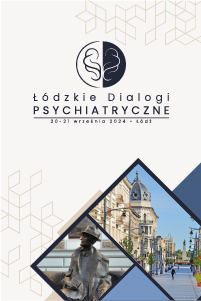Evaluation of the relationship between vitamin D concentration and cognitive performance in community dwelling elderly people
 Affiliacja i adres do korespondencji
Affiliacja i adres do korespondencjiIntroduction: People over the age of 65 are at a significant risk of vitamin D deficiency. This a result of many factors. Based on the studies conducted so far, it can be concluded that there is a relationship between vitamin D deficiency and the elderly age as well as the cognitive efficiency of people in this age group. The aim of the study was to assess the levels of vitamin D, the extent of its deficiency and cognitive performance in people over the age of 65. Material and methods: The study was carried out in 2014–2015 at the Clinic of Old Age Psychiatry and Psychotic Disorders of the Central Clinical Hospital of the Medical University of Lodz, as part of the DemNutr research project. One hundred eighty-seven people were qualified for the study. Among the research methods used, there were: interview, physical examination, clinical-demographic questionnaire and vitamin D [25(OH) D] concentration in blood serum. Results: The mean age of the subjects was 71.3 ± 5.9 years. The majority of the respondents were women – 78.6% (n = 147), men were only 21.4% (n = 40). The mean vitamin D concentrations in the groups of men and women were respectively 23.9 ± 7.46 ng/mL and 24.9 ± 7.21 ng/mL, and were below the norm in both groups. There was a statistically significant difference in the distribution of vitamin D concentration depending on the age of the subjects (p < 0.05). It turned out that in all people aged 85 or more the concentration of vitamin D was below 30 ng/mL vs. 78.7% of those surveyed aged 65–74 vs. 61.4% of people aged 75–84. A statistically significant difference in the average vitamin D concentration was also found in people who were examined in the summer (July – August) compared to the subjects in the period from September to June (p < 0.01). Significantly higher concentrations of vitamin D3 were observed in the summer (July – August) than in the remaining months of the year. The respective averages were: 27.2 ± 6.78 ng/mL vs. 23.9 ± 7.24 ng/mL. The mean values in Mini-Mental State Examination (MMSE) were 28.5 ± 1.71 points. There was a statistically significant difference between the number of points obtained in MMSE and age (rank = −0.227, p = 0.0009). There was no statistically significant relationship between the MMSE score the sex of the subjects and the vitamin D concentration (p > 0.05). Conclusions: Among the people over the age of 65, vitamin D deficiency is a common phenomenon. In the study, however, there was no correlation between the vitamin D concentration and the results achieved in MMSE.





















